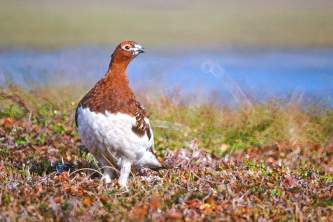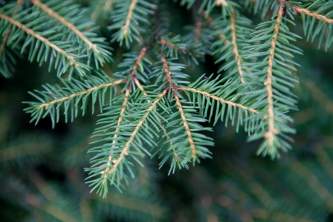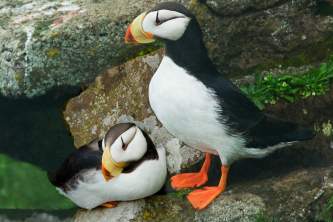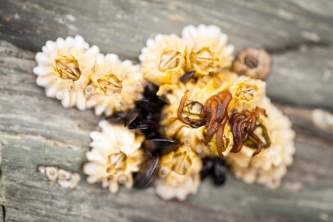Alaska Trout and Grayling Fishing Techniques
Alaska's waters offer plenty of opportunity to hook into grayling, lake trout, rainbow trout, and dolly vardens. Depending on when and where you anticipate fishing and for which species, the methods can vary substantially. We've compiled some of the basics to get you started in the right direction.
Grayling
This species is often found north of Anchorage, and is abundant in interior Alaska. An aggressive biter, this fish can be found in most interior waters, and are easily caught in lakes and small streams. While these fish never grow very large (20” is huge), they are a blast to catch and very tasty. Grayling can be found in both clear and murky waters, but can become spooky in bright light. Avoid letting your shadow fall on the waters where you fish.
Flies in size 12-16 (black ant, foam beetle, elk-hair caddis, mosquito, gnat, black wooly bugger, prince nymph and a variety of other natural colored flies, both wet and dry). Get a variety pack of split shot.
Small lures size 0-1 (Mepps Black Fury, Vibrax chrome, bright colors for dark days, dark colors for bright days)
Lake Trout
You guessed it, lake trout are found in lakes and are the largest trout here in Alaska. They move based on water temperature, being inshore when the water is cold, and moving to deeper water as the summer progresses. Your best bet to find these giants of the deep is in interior Alaska, with many great opportunities in the Glenallen area and along the Denali highway.
The general rule is that these fish like to eat other fish, so this is how you target them. Use lures/spinners that have fish patterns, or are blue/chrome. Fishing herring (as bait) on the bottom of a lake can also entice these monsters to bite. For flies, try patterns which resemble smolt or leeches (chrome/blue or dark colors).
Rainbow/Dolly Varden
This is by far the two most widespread species in Alaska, and can be found in lakes, rivers, and streams. Different tackle is used based on location and season, and I’ll cover that here.
Lakes - For spinning gear, try small lures size 0-2 (bright colors for dark days, dark colors for bright days). A bobber with bait also works. Use size 8-12 hooks, a bobber just big enough to see, and single eggs (balls o fire, etc) or popcorn shrimp as bait.
For flies, I’ve had my best luck using dark wooly buggers, twitched through the water like leeches. I would also try (black ant, foam beetle, elk-hair caddis, mosquito, gnat, black wooly bugger, prince nymph and a variety of other natural colored flies, both wet and dry).
I always keep a couple obnoxious colors because sometimes, the only way to catch them is to tick them off.
Streams/Rivers - If there are no salmon in the water, then use dark flies (black/purple wooly buggers, prince nymphs, etc). Let these flow with the current, twitching them to give them some life. Aim for overhanging branches and in “slow water” (behind bends, big rocks, fallen trees: anything that creates a hole; a slow patch of water).
If there are salmon in the water, you’re best bet is to use beads (to mimic salmon eggs). Pick a variety of colors, keeping in mind that salmon eggs come out bright deep red, and fade into a creamy pink color over time. You will want to change the color of your bead based on how long the eggs have been sitting in water (sometimes, you don’t know until you try). Bead size also makes a different. Fish the beads behind salmon, being careful not to hook the salmon. Keep the bead flowing at the same pace of the current.
Here is a loose guide on bead size (based on which salmon are in the water). In general, its okay to have beads too small, but not too large.
- Kings - 10mm
- Silvers/Reds/Chum - 6-8 mm
- Pinks - 6 mm
If there are salmon carcasses in the water, you will use flesh flies. Just like beads, these start out bright red, and fade into a dirty white as the flesh ages. These are tied just like normal flies, and fished very similar to beads. Feel free to adjust weight amount if you see flesh flowing faster/slower than current. See the attached diagram.




